#downy rattlesnake plantain
Text

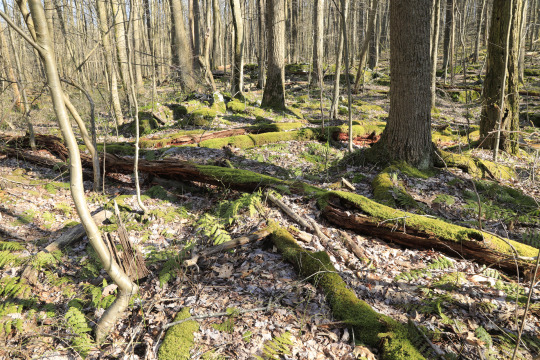
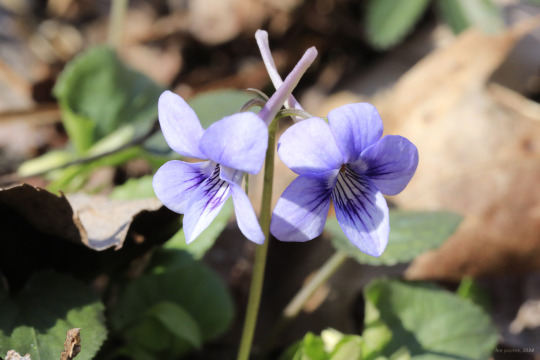
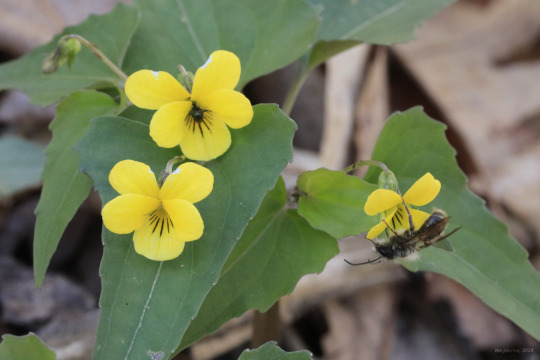
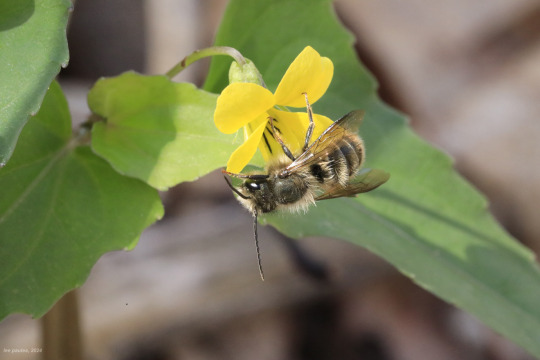

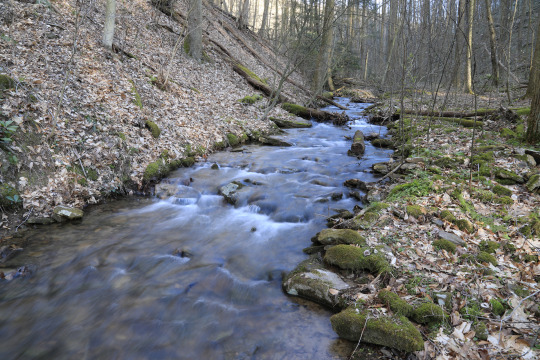
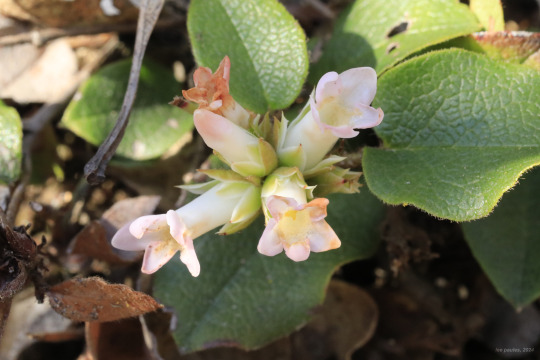
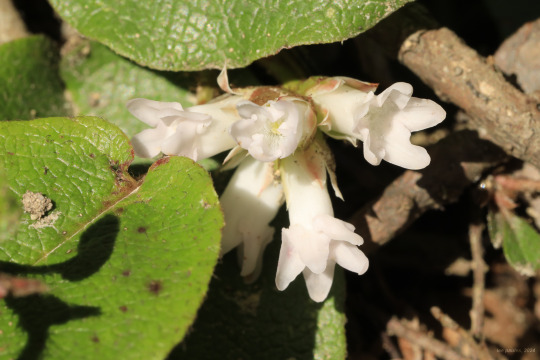
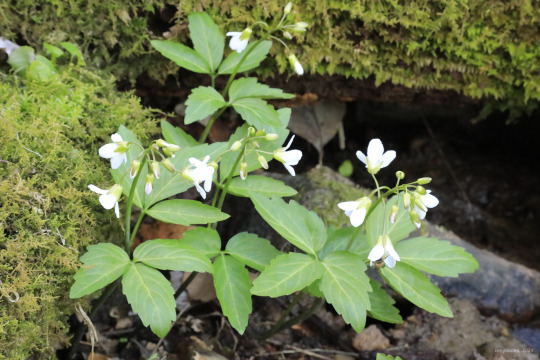
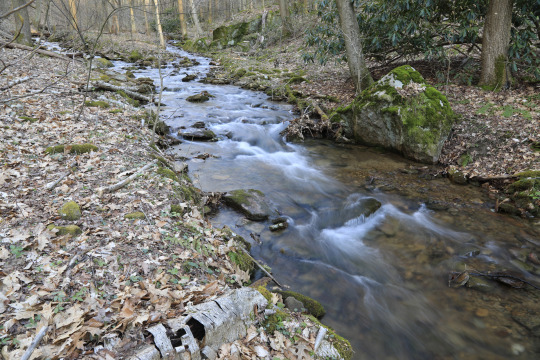
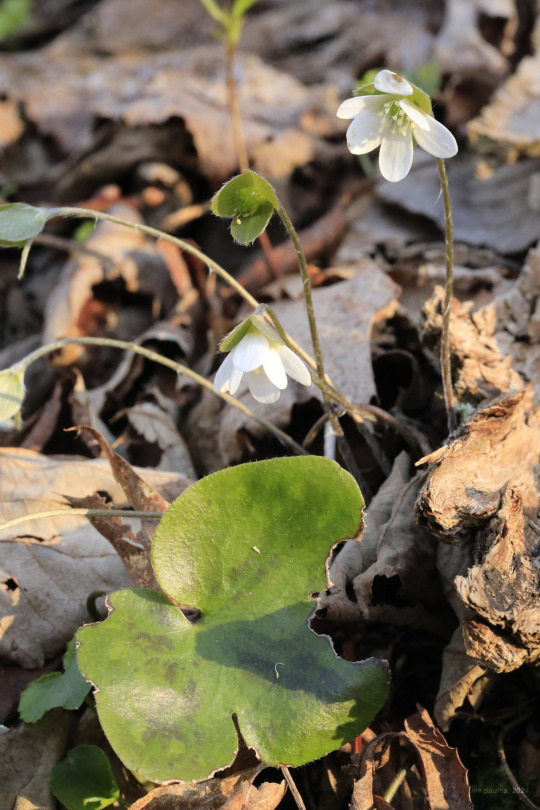
NC-WV is finally enjoying a dry, sunny spring weekend after weeks of near nonstop, flooding rain. That was all the incentive I needed to take my first long hike of the spring at Coopers Rock State Forest. The wildflower progression on top of Chestnut Ridge is running about 2 weeks behind that at lower elevations, but there were plenty of early spring beauties on display this afternoon. From top: Allegheny serviceberry (Amelanchier laevis); long-spurred violet (Viola rostrata); halberd-leaved yellow violet (Viola hastata); downy rattlesnake plantain (Goodyera pubescens); trailing arbutus (Epigaea repens), which is not herbaceous but a mat-forming, evergreen shrub in the health family; broadleaf toothwort (Cardamine diphylla), also known as two-leaf toothwort; and round-lobed hepatica (Hepatica americana), which prefers drier woods than sharp-lobed hepatica (Hepatica acutiloba), which I typically find growing on the rocky, calcareous slopes along the Monongahela River.
#appalachia#vandalia#west virginia#wildflowers#flora#spring#coopers rock state forest#chestnut ridge#allegheny serviceberry#long-spurred violet#halberd-leaved yellow violet#downy rattlesnake plantain#trailing arbutus#broadleaf toothwort#two-leaf toothwort#round-lobed hepatica
86 notes
·
View notes
Text
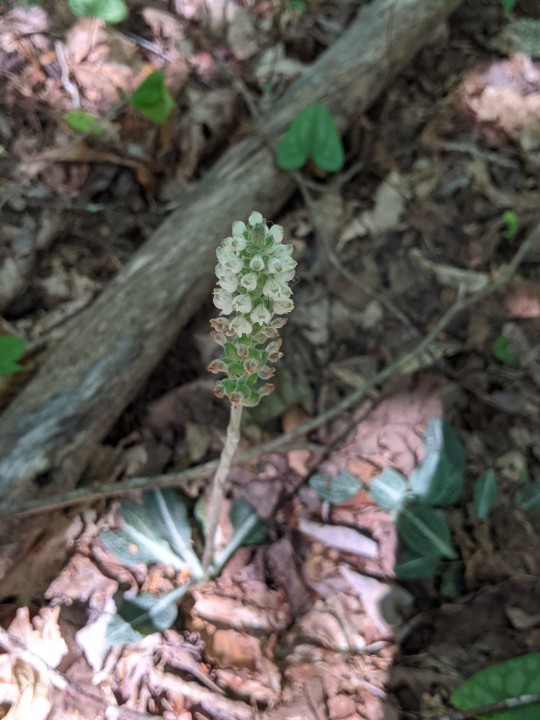

*DJ Khaled voice* Another one!
This is Goodyera pubescens, another common summer-blooming native orchid, also known as Downy Rattlesnake Plantain.
#native orchids in bloom#now i gotta see a puttyroot flower#which will be harder since there aren't nearly as many of them around here#wildflowers#native plants#rattlesnake plantain#downy rattlesnake plantain#goodyera#goodyera pubescens#native orchids#forest floor
29 notes
·
View notes
Note
Trick or treat!

have a downy rattlesnake plantain orchid :)
78 notes
·
View notes
Text
Nodding Lady's Tresses (Spiranthes cernua (L.) Rich.)
Orchidaceae (Orchid Family)
Synonym(s): Nodding Ladies’-tresses, Ladies’-tresses, Nodding Lady’s Tresses
Base Flower Color: WhiteReproductive Phenology: Jul, Aug, Sept, Oct, NovBloom Notes: In total population numbers, Nodding Lady’s Tresses is second only to Downy Rattlesnake Plantain, Goodryea pubescens, as the largest orchid species in the southern Appalachian Mountains.
For more…
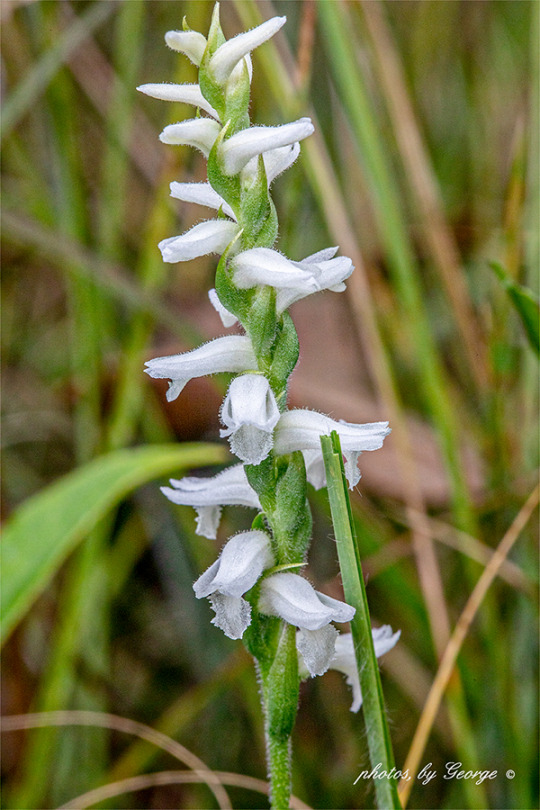
View On WordPress
0 notes
Text

Downy rattlesnake plantain (Goodyera pubescens). One of the most common orchid species native to the eastern United States
1 note
·
View note
Text

Downy Rattlesnake Plantain
Goodyera pubescens
Whittleton Trail, KY
18 July 2021
#downy rattlesnake plantain#orchid#wildlflower#original photographers#photographers on tumblr#imiging#nature photography#flower photography
38 notes
·
View notes
Photo


Goodyera pubescens, the downy rattlesnake plantain, is a spreading orchid that grows mostly in the leaf litter of woodland floors. The common name refers to the fluffy flower stalk and blooms, and the scale-like venation on the leaves. Though mostly lacking the metallic component in the leaves, this plant still belongs to group of plants called Jewel Orchids due to the showy leaves. Though native to the eastern United States and parts of Canada, this plant grows well for me in California which has its own harder-to-find species of Goodyera (Goodyera oblongifolia). I grow this with some other well-known eastern orchids such as Tipularia discolor (cranefly orchid) and Aplectrum hyemale (putty root orchid.)
42 notes
·
View notes
Photo




A break from the fen posts for a minute for some back cove glam in the Copperas creek district
Red River Gorge can have some dramatically humid ravines, so much so that the humidity even gets to a pretty tough field camera.
These aren’t the best shots; but, still stoked on the size of the population. This entire mound was caked in rosettes, about thirty or so of this beautiful and common terrestrial orchid.
Goodyera pubescence
Downy rattlesnake plantain.
36 notes
·
View notes
Text



So many downy rattlesnake plantain in one spot. Fun orchids!
1 note
·
View note
Text
After browsing/scouring through that inaturalist app I discovered that in fact, there are sightings/documentations of several plant species for my locality (just not groundnut vine of course) on the app. What’s interesting is the fact most of the species are ones I would not the least bit expect to exist anywhere in my county, said surprising species include;
Lindera benzoin (Northern Spicebush)
Ptelea trifoliata (Common Hoptree)
Drosera intermedia (Spoonleaf Sundew)
Cyperipedium parviflorum (Yellow Lady’s Slipper Orchid)
Triadenum fraseri (Bog St. John’s Wort)
Gentiana linearis (Narrowleaf Gentain)
Phytolaccca americana (Pokeweed)
Carya ovata (Shagbark Hickory)
Geum triflorum (Prairie Smoke)
Clematis virginiana (Virgin’s Bower)
Melampyrum lineare (Narrowleaf Cow wheat)
Mimulus ringens (Allengeny Monkeyflower)
Goodyera pubescens (Downy Rattlesnake Plantain orchid)
Arisaema dracontium (Green Dragon)
Claytonia virginica (Virginia Spring Beauty)
Andromeda polifolia (Bog Rosemary)
Euonymus obovatus (Running Strawberrybush)
Penstemon hirsutus (Hairy Beardtongue)
Checking the map, it appears that some are not only in this county, but are not far from some of the closestby towns, PLUS potentially Ellice Swamp (you can’t map marker THAT close to Gadshill with wetland species and NOT be referring to Ellice Swamp). It is also interesting to note that some species were NOT on the county’s map sightings (Christmas Fern and Canadian Hemlock being the big two, almost concerning me just a bit).
Most of these species I’ve listed I’d only be able to find in spring or summer, not to mention most of them are absolutely-do-not-collect/touch plants whether due to sensitivity/rarity and/or just because they are on biologically protected land (The sundew and the orchids I can say that with an absolute certainty; do not even touch, even seedpods are off limits).
That being said though, seeing some of these species listed for this county gives me some hope that I may one day find them in some local woodlots (Claytonia and Green Dragon being the ones I’m holding the most hope for; their habitat preferences tend to overlap Trillium and Jack in the Pulpit territories in most ecological data). The do-not-touch species tbh I would just enjoy to just see with my own eyes and I’d be satisfied. Guess we’ll see in the future won’t we?
9 notes
·
View notes
Photo

Goodyera pubescens, the downy rattlesnake plantain, is one of the most common orchids native to eastern North America #orchid #wildflowers #nature #naturephotography https://www.instagram.com/p/CZ0h4NfMsCu/?utm_medium=tumblr
1 note
·
View note
Text


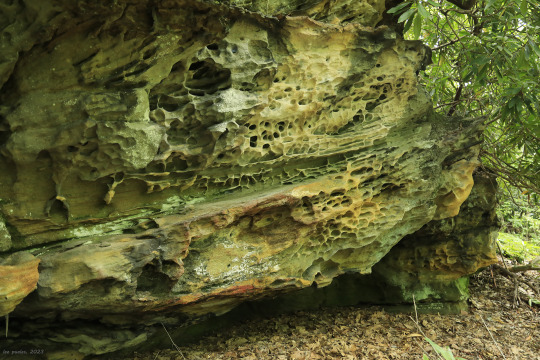

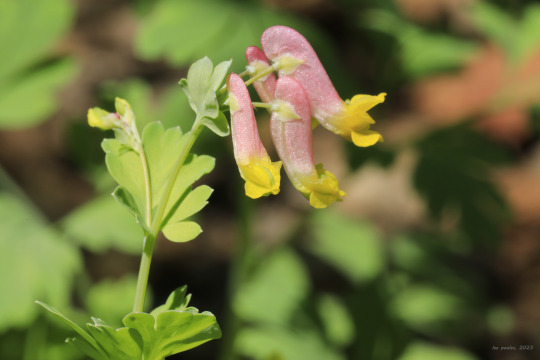
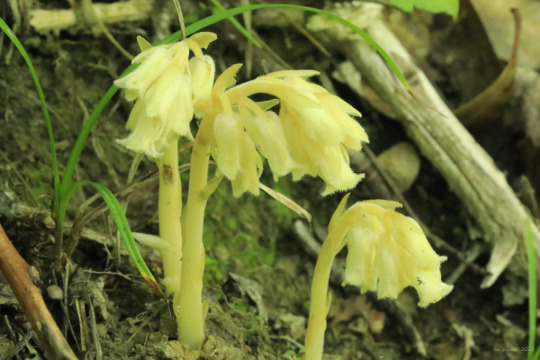










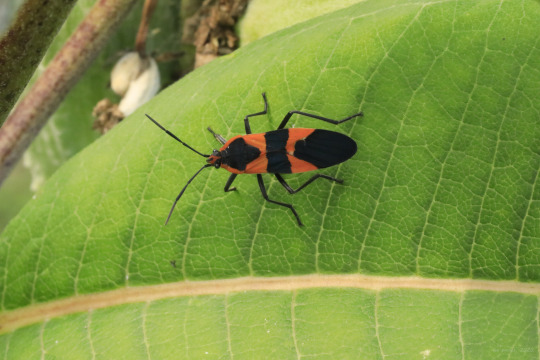
A hike in the Cheat River Canyon on a hazy, mid-summer day brings a great many rewards, both large and small.
From top: Fractured and pitted sandstone gives testimony to the canyon's ancient struggle with the elements; black cohosh (Actaea racemosa or Cimicifuga racemosa), whose towering flower spikes stalk the old woods like magical beings; the colorful rock harlequin (Corydalis sempervirens), an endangered fumitory that haunts the canyon's rocky outcrops; pinesap (Monotropa hypopitys), a parasitic plant closely related to Indian pipe; spotted St. John's wort (Hypericum punctatum), which is distinguished from the invasive St John's wort (Hypericum perforatum) by the numerous black dots on its flowers and leaves; downy rattlesnake plantain (Goodyera pubescens), a shade-tolerant terrestrial orchid that favors oak-hickory woods; shrubby St. John's wort (Hypericum prolificum), a mounding, deciduous shrub of open, sandy woods; orange-fringed orchid (Platanthera ciliaris), a stunning late summer beauty of Appalachia's moist meadows and open woods; a hummingbird clearwing moth (Hemaris thysbe) visiting a late-blooming milkweed; a silvery checkerspot (Chlosyne nycteis) drinking up the nectar of a butterfly milkweed (Asclepias tuberosa); an American green crab spider (Misumessus oblongus) stalking a black-eyed Susan for its next meal; a large milkweed bug (Oncopeltus fasciatus) being perfectly beautiful on a lazy summer day; and last but not least, a hulking patch of eastern Jack-0'-lanterns (Omphalotus illudens), which contrary to what field guides say have never glowed in the dark for me (I love the toxic little beauties nonetheless).

#appalachia#vandalia#west virginia#wildflowers#flora#summer#snake hill wildlife management area#cheat river canyon#chestnut ridge#fungi#insects#orchids#black cohosh#rock harlequin#pinesap#spotted st. john's wort#downy rattlesnake plantain#shrubby st. john's wort#orange-fringed orchid#hummingbird clearwing moth#silvery checkerspot#butterfly milkweed#american green crab spider#large milkweed bug#jack o' lantern#lepidoptera
173 notes
·
View notes
Text
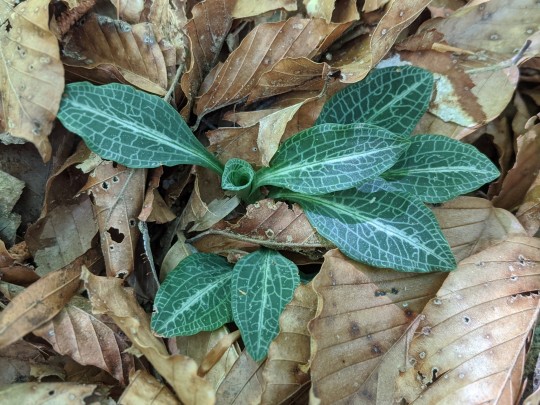
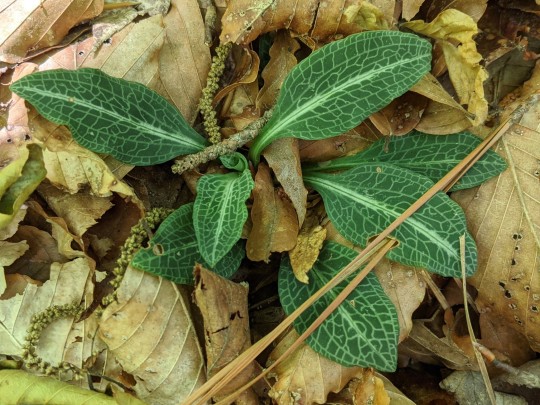
This plant has got to be Goodyera pubescens - downy rattlesnake plantation - because it couldn't really be anything else I can find. But it's just not downy, it's smooth. I have also seen local examples that do live up to the names. I don't know what to make of this variation.
#plant id#Goodyera#Goodyera pubescens#forest floor#native plants#rattlesnake plantain#downy rattlesnake plantain#wildflowers#orchids
9 notes
·
View notes
Photo

Downy Rattlesnake Plantain is a somewhat uncommon beauty of the Ozarks. This plant is actually not related to common plantain but is in fact an orchid! ... ... Its namesake comes from the markings on its leaves that resemble the pattern of rattlesnake skin. Additionally Native Americans used this plant to treat snake bites! ... ... Due to it's rarity, if you find this remarkable plant growing in the Ozark woodlands please admire it where it is and don't attempt to bring it home with you. ... Goodyera repens ... ... #permaculture #Ozarks #native #orchid #rattlesnake #snakes #herbalism #arkansas #nature #ecology #takeahike #sustainability #wonderfularkansas #biodiversity (at Deer, Arkansas)
#wonderfularkansas#ecology#orchid#takeahike#sustainability#biodiversity#ozarks#rattlesnake#nature#herbalism#permaculture#arkansas#native#snakes
10 notes
·
View notes
Photo


Downy Rattlesnake Plantain
Goodyera pubescens
Donald Park, WI
28 July 2020
#downy rattlesnake plantain#orchid#wildflower#original photography#photographers on tumblr#imiging#nature photography
29 notes
·
View notes
Photo

Downy Rattlesnake Plantain
Goodyera pubescens
1 note
·
View note